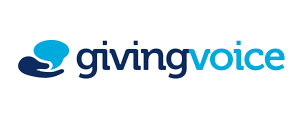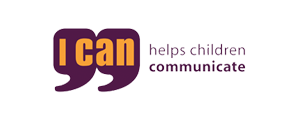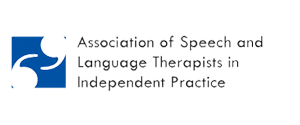Dysarthria
Dysarthria is the term given to speech impairment that is affected by the reduced or weakened functioning of the muscles used in speech and respiration, such as lips, jaw, tongue, vocal folds, velum and diaphragm. The type of dysarthria and severity of impairment can vary between children.
As dysarthria affects many aspects of the child’s speech, such as breathing, producing and articulating sounds, it can become effortful for the child to speak and they may be difficult to understand.
Our speech and language therapists can provide therapy and advice on how to reduce the effort, children with dysarthria need to put into their speech. Therapy can also increase a child with dysarthrias speech skills to become more understandable to others.
What exactly is dysarthria?
Dysarthria is a motor speech disorder that affects the functioning of the speech and breathing muscles. It can be caused by damage to the nervous system or other conditions that affect the functioning of these muscles. Dysarthria can affect all the processes of speech such as respiration, phonation, articulation, resonance and prosody. The severity of the dysarthria and the type of dysarthria depends on the amount of damage to the brain and the location of damage in the brain. There are six types of dysarthria that can occur in children, these are:
- Spastic dysarthria: Is the result of tight or stiff speech muscles.
- Flaccid dysarthria: Is the result of weakness or reduced muscle tone.
- Ataxic dysarthria: Is the result of imprecise coordination or slow movement of the speech muscles.
- Hyperkinetic dysarthria: Is the result of fast uncontrollable movement of speech muscles.
- Hypokinetic dysarthria: Is the result of slow movement of speech muscles and reduced range in movement.
- Mixed dysarthria: Is the result of weakness or paralysis of all muscles used in speech.
What causes dysarthria?
Dysarthria is caused by damage to the neurological system this can be acquired or developmental. Acquired dysarthria are usually the result of a haemorrhage to the brain, stroke or traumatic brain injury. Developmental dysarthria are usually secondary to conditions children are born with or develop after birth. Some conditions include:
- Spina-bifida
- Cerebral palsy
- Motor neurone disease
- Down’s syndrome
- Fragile X syndrome
- Multiple sclerosis
- Muscular dystrophy
Prevalence
It is not known how common dysarthria is or how often it occurs in children as it is usually a secondary feature to other conditions or illnesses.
Symptoms associated with dysarthria
Dysarthria affects the speed, range, tone, strength, control and accuracy of the movements required in speech. It also affects the respiration (breathing), phonation (voicing), articulation, resonance (nasality) and prosody (rhythm, stress intonation patterns in speech) processes that are needed in the production of speech. Some symptoms that occur as result of these difficulties include:
- Slow pace of speech.
- Difficulties regulating rate of speech.
- Difficulties with breathing, resulting in speech becoming effortful.
- Difficulty using the correct pitch, tone and intonation pattern during conversations.
- Speech that is slurred.
- Articulation difficulties.
- Difficulties with moving tongue, lip and jaw.
- Varying qualities of voice that include, hoarseness, hyper-nasality, hypo-nasality, and a breathy voice.
- Difficulties with controlling the volume of their voice, it can be extremely loud or extremely quiet or a combination of both.
- Difficulties with swallowing.
- Prolonged pauses in speech.
- Echolalia - repetition of noises and phrases that have been heard.
- Grunting during speech.
How does dysarthria impact upon function?
Dysarthria is disorder that impacts a child’s speech skills. This can affect their communication abilities with people they interact with on a daily basis. Such as parents, teachers, friends and siblings. Some potential problems that may arise for a child who has dysarthria include:
- Difficulties being understood by others.
- Difficulties being able to express emotion through their voice.
- Implications child’s confidence levels.
- Difficulty taking part in activities around school or extra-curricular activities that require speech.
- Difficulty communicating with friends and family.
Speech and language therapy can reduce the levels of frustration caused by dysarthria, by working on aspect of the child’s speech to help them be more intelligible to others. Speech and language therapists can assess your child’s speech ability and provide them with a therapy programme unique to their skills and abilities.
Speech and language therapy assessments suitable for dysarthria
Our speech and language therapists will assess your child’s speech and communication skills to see where the difficulties lie. Our speech and language therapists will carry out formal and informal assessments that look at a variety of aspects including speech production, articulation, tone, pitch and movement.
Assessments used by our speech and language therapists include:
- Oro-motor examination - assessing movement and strength of tongue, lips, jaw and velum.
- Articulation assessment.
- Assessment of intonation pattern, rhythm, rate, tone and volume of voice.
- Assessment of breathing skills.
Speech and language therapy available for dysarthria
Speech and language therapy can be extremely beneficial for a child who has dysarthria, it can work on creating less effortful and more intelligible speech. This can increase the child’s communication skills.
A child who has dysarthria can have difficulty taking part in aspects of school life as they struggle to be understood. Our speech and language therapists can work on the child’s intelligibility by providing them with exercises and techniques that work on articulating sounds clearer. This can help to increase the child’s intelligibility and confidence to take part in activities that require speech.
Some therapy options we provide for dysarthria include:
- Developing precise articulation.
- Improving and developing breathing techniques to aid speech.
- Exercises to increase movement and strength of speech muscles.
- Exercises to increase volume, rate, tone, rhythm and intonation of speech.
- Advice and strategies to parents, professionals and sibling on how best to communicate with children who have dysarthria.
- Augmentative and Alternative Communication (AAC) if needed due to severity of speech difficulties.
Speech and language therapy activities would vary according to each child’s abilities and needs. Our speech and language therapists will work with you and your child to create a tailor made programme after assessment. Therapy programmes will be based around your child’s needs, goals, motivations and your priorities.








